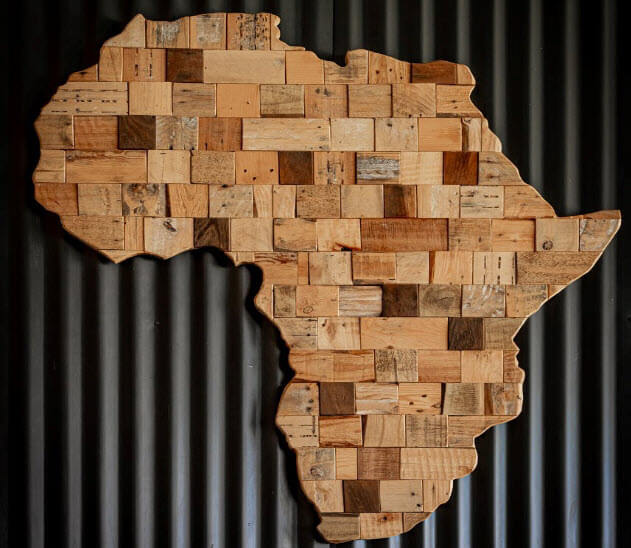by Sibahle Magadla
Most of us grew up believing Africa is the ‘dark continent. So, in the spirit of celebrating South Africa’s Heritage Month, I’ve listed below 24 historical facts which highlight that Africa was at the forefront in terms of wealth; inventions that changed the world; and scientific advancements.

- Ethiopia minted its own coins over 1,500 years ago
- The empire of Mali, West Africa was once the richest in the world. Hmmm… I wonder if this the reason why imali is the name used for money in the IsiXhosa and IsiZulu languages!
- Under the orders of Mansa Musa, Malian sailors voyaged to America in 1311 AD, 181 years before Christopher Columbus. An Egyptian scholar, Ibn Fadl Al-Umari, published this information in his book around 1342.
- The Kingdom of Mapungubwe, the first state in Southern Africa on the border between South Africa, Zimbabwe and Botswana, arose in 12th century AD. Its wealth came from controlling ivory trade from Limpopo Valley; trading copper from the northern Transvaal, and gold from the Zimbabwe Plateau with Swahili merchants at Chibuene, Mozambique.
- Ancient Somali people connected the Horn of Africa’s commerce with the rest of the ancient world. Somali sailors and merchants were the main suppliers of frankincense, myrrh & spices – valuable luxuries to the Egyptians, Phoenicians, Mycenaeans and Babylonians.
Ruins of a 300 BC astronomical observatory were found at Namoratunga, Kenya. Africans mapped the movements of stars such as Triangulum, Aldebaran, Bellatrix, Central Orion, etc. - Evidence discovered in 1978 showed that East Africans were making steel for more than 1,500 years.
- Benin mastered bronze processing during the 16th century, producing portraiture and relief sculptures using the lost wax process. Benin was also a manufacturer of glass and glass beads.
- Iron use in smelting & forging for tools, appeared in West Africa by 1200 BC, making it one of the first places for the birth of the Iron Age. The industrial revolution would have never happened had it not been for Africans smelting iron over 2,500 years ago.
- Ancient Tanzanians had been producing carbon steel long before the British industrialization.
- Three philosophical schools existed in Mali during the country’s “golden age” (12th to 16th centuries): University of Sankore, Sidi Yahya University, and Djinguereber University.
- Ancient Egyptians invented one of the earliest calendar systems (after the Sumerians) thousands of years ago.
- The oldest form of writing developed between 5000 and 3000 BC in Sub-Saharan Africa.
- The Mauritanian cities of Chinguetti & Oudane have about 3,450 hand-written mediaeval books. Some date back to the 8th century AD. There are 11,000 books in private collections in Niger today. In Timbuktu, Mali, there are about 700,000 surviving books.
Dignitaries at Jebel Adda, Sudan in late 13th century AD valued style & fashion. They wore long coats of red & yellow patterned damask. Underneath, they wore plain cotton trousers of long and baggy cut, along with red leather slippers on their feet

- Bling culture existed in early Tanzania. A 16th century Portuguese chronicler wrote: “They are finely clad in many rich garments of gold and silk and cotton, and the women as well… with much gold and silver chains and bracelets, on their legs and arms; and many jeweled earrings in their ears…”
- The Songhai Empire of 16th century West Africa had a government position called Minister for Etiquette and Protocol!
- Musical instruments including the Violin, Guitar (& bass guitar), Banjo, Fiddle, Piano, Dulcimer and of course the Drum are of African origin.
- Evidence reveals that international trade was first developed between Africa and Asia! Among these international trade contacts were the exchange of ideas & cultural practices that laid the foundations of the earliest civilizations.
- The earliest known surgery was performed in Egypt. Furthermore, autopsies and caesarean operations were routinely and effectively carried out by surgeons in pre-colonial Uganda. The surgeons routinely used antiseptics & anaesthetics!
- Sudan in 9th century AD had housing complexes with bathrooms, piped water and glass windows.
- Toilets and sewerage systems existed in ancient Egypt.
- Pre-colonial West Africa had walled towns and cities!
- Kumbi Saleh, the capital of Ancient Ghana, flourished from 300 to 1240 AD. Archaeological excavations have revealed large houses, almost habitable today, with underground rooms, staircases and connecting halls.

Enjoyed these facts? Good – there’s so much more to know! The history of Africa is not only limited to colonialism, war and poverty. I hope part 1 of my ‘Focus on Africa’ series whets your appetite to learn more about African history. Part 2 (coming 17th September) will dig deeper and provide a list of sources you can read about our amazing continent and her people.






